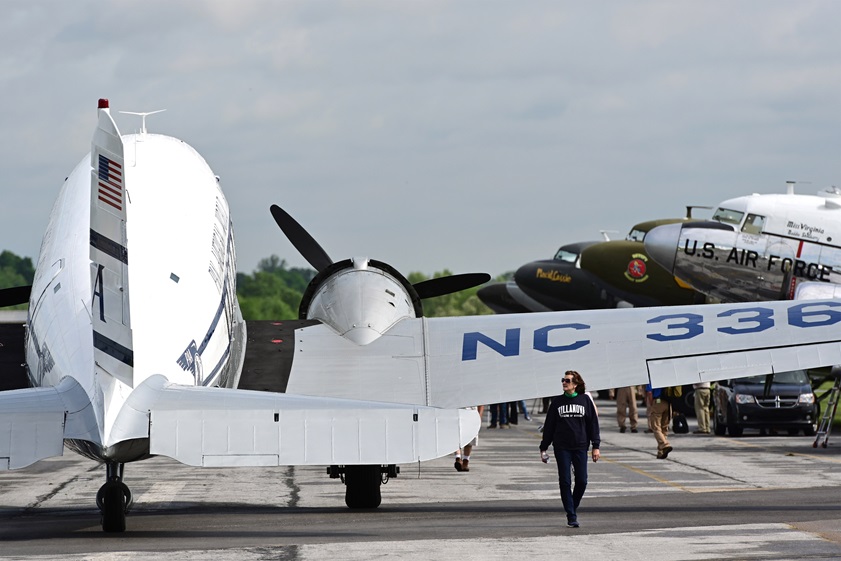D-Day Squadron aircraft land in Europe
Daks Over Normandy to commemorate World War II Allied invasion
The D-Day Squadron reported on social media that the World War II twin-engine taildragger troop- and passenger-carrier aircraft in its group landed without incident in Duxford, England, May 27.
The restored Douglas C–47 That’s All, Brother that led the original D-Day mission was among the first to land in Duxford as the June 6 seventy-fifth anniversary of D-Day approached. It was joined by Miss Virginia, Betsy’s Biscuit Bomber, Placid Lassie, Flabob Express, Clipper Tabitha May, Virginia Ann, D-Day Doll, and Liberty, which were parked on the grassy Duxford Airfield ramp.
By mid-week several other of the 30 lovingly restored warbirds were preparing for the final stages of an Atlantic Ocean crossing including Miss Montana, a DC–3 unveiled at the 2018 AOPA Fly-In at Missoula, Montana.
A handful of aircraft were still winging their way across the United States, including a California-based C–41A requisitioned by U.S. Air Force Gen. Henry H. "Hap" Arnold as a VIP transport known as Hap-Penstance.
The Spirit of Benovia was reported to be in Dublin, Ireland, and preparing to depart for England “in the next couple of days,” while Rendezvous with Destiny was “wheels up from Goose Bay [Labrador].”
The aircraft were ferried via the Blue Spruce route, a series of airfields in Newfoundland, Labrador, Greenland, and Iceland that allows the fleet to hop across the ocean from North America to Europe. The path was similar to the routes pilots took during World War II.
The troop-carrying aircraft and other significant warbirds planned to rejoin and drop 250 paratroopers over the shores of Normandy, France, to commemorate the predawn reconnaissance behind enemy lines in advance of 156,000 troops that would later storm the beaches. Allied casualties on June 6 have been estimated at 10,000 killed, wounded, and missing in action, according to a 2014 White House fact sheet.
One by one, the hulking aircraft negotiated a crosswind in conditions described as “a little windy,” during a video post that documented D-Day Doll’s touchdown. A fighter flyby performed by a Republic P–47 Thunderbolt followed by a British Supermarine Spitfire saluted D-Day Doll as the aircraft and crew were marshaled to parking, reminiscent of the days when warbirds filled the skies over northern Europe.





